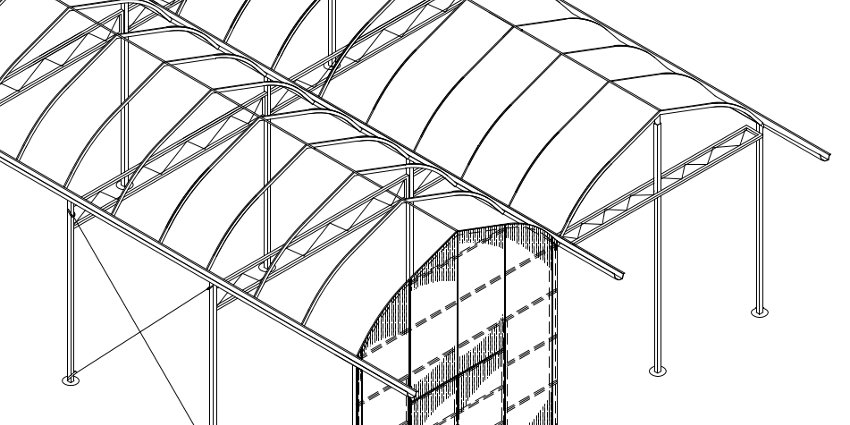In Fall of 2015, the Richmond Nursery constructed new greenhouses at 5740 Old Richmond Road, the corner of Richmond Road and Fallowfield Road. The Strawberry Farm and Greenhouse are now together at the same location.
2015 marked a very special and exciting time for Richmond Nursery. Over the past five decades our family has grown millions of plants and tried many crops. We've helped landscape the Ottawa Valley one home at a time and we put Richmond on the map for strawberry and plant production.
In the fall of 2010 with the passing of George Rofner, we took a step back and looked at all we have done over the years. At everything we're grown, everything we've tried, and looked back to what started it all. Ultimately, it was the plants. It has always been the love of the plants. The colours of flowers, the taste of fresh fruit, and the satisfaction of spreading the same joy to others. To empower our customers to grow their own flowers and enjoy their own fresh produce. A new dream was born incorporating everything that embodies the Richmond Nursery.
Now, our dreams are becoming reality. We are taking on the project of relocating our Garden Centre and building a new greenhouse facility at our strawberry farm on 5740 Richmond Road, the corner of Richmond Road and Fallowfield Road. For anybody who has picked strawberries before, it will be comfortingly familiar. And if you haven't been picking strawberries, you're missing out on what is our biggest family tradition and the first crop George Rofner planted to start Richmond Nursery.
Sincerely,
Peter & Sue Rofner
Forward Thinking
The move to our new location is all about growing the best plants in the most responsible manner possible. We've worked in many smart and sustainable ideas into our designs. Here are a few highlights of our designs:
- Rain water is collected and stored in an inside water silo. Excess water can overflow into our existing pond. Drain tiles under the greenhouse also carry excess water into the pond to "close the loop".
- Burning Natural Gas for heat is clean and efficient, but only goes so far. Warm CO2 and water vapour exits the chimney lowering the efficiency to near 80%. Half the furnaces used will instead recycle the warm CO2 into the greenhouse which acts as a fertilizer for plants leading to 98% efficiency. CO2 levels are always computer monitored and controlled to ensure safety.
- Irrigation is traditionally controlled manually or by timers. That's not good enough. We've developed our own custom made water system that uses water sensors in our pots to more accurately start and stop watering to make sure plants get just the right amount of water. Statistics on how wet and dry plants are get logged wirelessly to help troubleshoot any problems down the line.
- Rather than fans to cool the greenhouse, half the roof will pivot open to release heat and humidity which is far more efficient than continuous running fans.
- A reflective and retractable "Energy Curtain" will be installed in the greenhouse which closes at night to help contain as much heat as possible reducing emissions up to 30%. The curtain can also be closed on very hot and sunny days to partially or fully shade interior crops reducing the need for cooling.
- Light levels are monitored carefully, but only the specific wavelengths of light that are usable by plants. Supplementary lights are activated only when natural daytime light levels are insufficient. By tracking photosynthesizable light only, it ensures the plant receives optimal light when it needs it without wasting energy when it doesn't.
- Greenhouses are covered with two layers of plastic with air in between. Traditionally, a series of blower motors run all the time to inflate the air-space. We're taking it a step further by using a single variable-speed motor which adjusts it's speed and energy use depending on the pressure in the plastic.
- Pumping water traditionally also uses large pumps that are either on or off. Again, we've opted for a variable speed motor sensing the water pressure and speeding up or slowing down depending on how much water is being used at once. A sudden peak in water usage at an off time will trigger the pump to turn off and alter us to a possible broken pipe.

